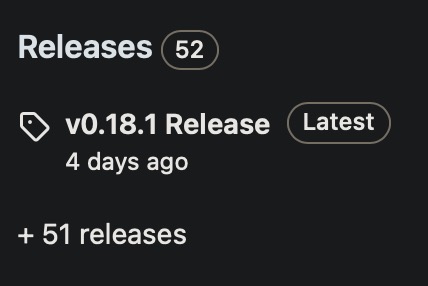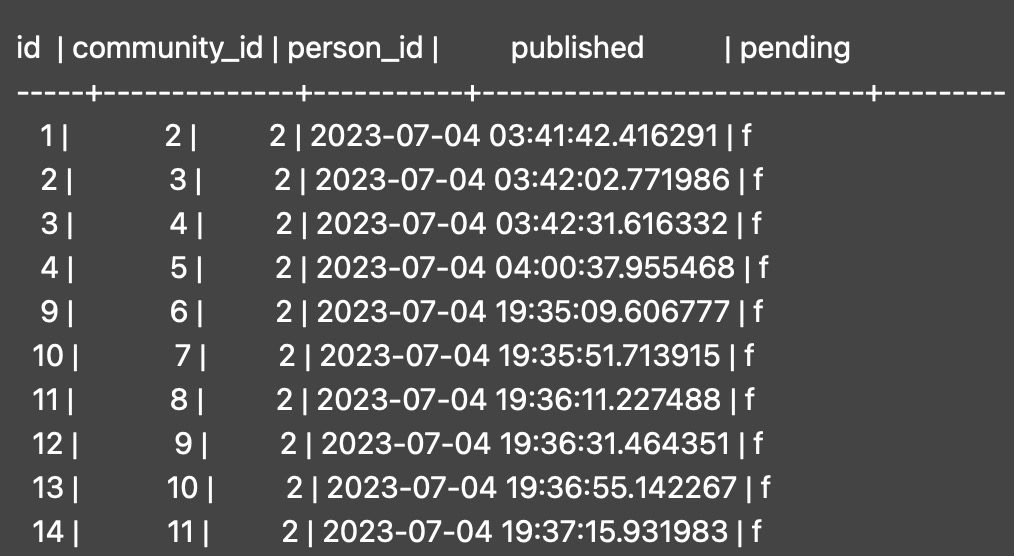

yep had to do that was initially getting “too many redirects.”


yep had to do that was initially getting “too many redirects.”

I’ve wondered the same and thought they might be new since my last visit?


I put this site behind cloudflare in response to this post. Other than having to change SSL/TLS encryption mode to Full, it seemed easy. I turned on bot fight mode and I’m using the managed WAF ruleset that comes with the free tier. Any configuration recommendations anywhere in the panel?

you both probably have ‘show read posts’ (or something similar) disabled under user settings.

I’m replying from the balcony of my cruise ship so I’m unable to give this response the detail it deserves. And, we’d need to decide this as a group. But essentially as my backup, if there’s an incident requiring a prompt action and I’m unreachable, you’d have credentials to do the needful.
Maybe we use a shared spreadsheet to track instance statuses including an in/out status for the primary admin. So if there’s a new vulnerability, it’s unpatched on the instance and the primary is out, the backup or the backup to the backup handles it.

Thanks for writing this up. Saving it for when I need it!
btw - you can paste that link into search and it will return you a home instance link to click. So that’s a decent work around for now. But I’m all for home instance link rewrites.

you know you can easily scale up and down instance sizes on aws, or move your instance to, say oracle. I’ve done both of these. The Ansible installer makes it very easy to move. you just down your containers and copy over the volumes directory for the move.
With these options you can start small and free. It may take a while to grow to 100 users. A 2 vcpu 2GB ram t4g.small on aws seems more than adequate and there’s a free trial through the end of the year. It’s arm64 though so small changes to the ansible lemmy.yml. The free tier t2.micro at 1 cpu 1 GB ram seemed too small.
Oracle has an always free arm64 image with 4 cpu and 24 GB ram plus a generous boot disk and 200GB block storage so you might as well start there. It will probably last quite a while. Maybe all the way through 100 users. The only thing is while I know it’s very easy to change your instance type on AWS, I haven’t looked into it on Oracle. But again moving your instance is very easy.
I agree and would support a feature request for lemmy-ui if not already in place for this one.

you probably need to update config.hjson inside inventory/host_vars/<instance_name> ??
locally, in the lemmy-ansible/inventory… directory.
I really do trust both of these projects and the community mindedness of their owners. Does someone know how you’d go about verifying a 3rd party image hasn’t diverged from the official project image?
hmm weird. This bot is announcing an 18.2 release (and I think people are installing it.) https://matrix.to/#/#lemmy-support-releases:discuss.online
But the repo is still showing 18.1 as the latest.

Much appreciated! Looking for this morning’s release with the vulnerability fix.
As you’re doing it anyway, if whoever is in charge of these things were agreeable to it, would you be willing to do the official Arm images under https://hub.docker.com/r/dessalines/lemmy? One key advantage is the official ansible deployment method would work without modification for Arm deployments.
so consider a smaller local instance like I’m setting up. If it’s ever anything more than me and my mom it’s gonna be a bunch of people I know and their friends. And if my instance is their entry point to the fediverse then yeah I want it to be as private as we can make it for them.
But also, even if someone’s IRL identity was masked, I’ve only been around a week and I’m starting to recognize handles on the fediverse. Ideally we make friends here and it’s a community for us.
Now imagine how humiliating it would be if someone malicious gained control over an instance and published everyone’s subscriptions/likes etc. Sure more savvy users probably do have separate accounts but honestly most will not.
the point is not to encrypt your user id, check this out if you haven’t seen it I think I explain it better here: https://lemmyadmin.site/comment/46. It’s a lot more privacy. And thinking as an admin that wants to provide a safe space for my users, I think it’s worth the effort. I took a very quick look at the tables related to person and I’d bet you could treat these similarly to community_follower:
TABLE "comment_like" CONSTRAINT "comment_like_person_id_fkey" FOREIGN KEY (person_id) REFERENCES person(id) ON UPDATE CASCADE ON DELETE CASCADE
TABLE "comment_saved" CONSTRAINT "comment_saved_person_id_fkey" FOREIGN KEY (person_id) REFERENCES person(id) ON UPDATE CASCADE ON DELETE CASCADE
TABLE "community_block" CONSTRAINT "community_block_person_id_fkey" FOREIGN KEY (person_id) REFERENCES person(id) ON UPDATE CASCADE ON DELETE CASCADE
TABLE "community_follower" CONSTRAINT "community_follower_person_id_fkey" FOREIGN KEY (person_id) REFERENCES person(id) ON UPDATE CASCADE ON DELETE CASCADE
TABLE "person_follower" CONSTRAINT "person_follower_follower_id_fkey" FOREIGN KEY (follower_id) REFERENCES person(id) ON UPDATE CASCADE ON DELETE CASCADE
TABLE "post_like" CONSTRAINT "post_like_person_id_fkey" FOREIGN KEY (person_id) REFERENCES person(id) ON UPDATE CASCADE ON DELETE CASCADE
TABLE "post_read" CONSTRAINT "post_read_person_id_fkey" FOREIGN KEY (person_id) REFERENCES person(id) ON UPDATE CASCADE ON DELETE CASCADE
TABLE "post_saved" CONSTRAINT "post_saved_person_id_fkey" FOREIGN KEY (person_id) REFERENCES person(id) ON UPDATE CASCADE ON DELETE CASCADE
TABLE "private_message" CONSTRAINT "private_message_creator_id_fkey" FOREIGN KEY (creator_id) REFERENCES person(id) ON UPDATE CASCADE ON DELETE CASCADE
TABLE "private_message" CONSTRAINT "private_message_recipient_id_fkey" FOREIGN KEY (recipient_id) REFERENCES person(id) ON UPDATE CASCADE ON DELETE CASCADE
also, you could modify subscription counters so you had a count of subscribers from an instance without knowing who they were.
what is the problem with votes btw? Someone else just mentioned those should be private too in the chat where I first raised this.
There, you’ve already found a reasonable way around it! 😀
lets take community subscriptions specifically. Here’s a handful of rows from community_follower with my person_id. Why couldn’t you hash community_id with my public key and then I provide my private key to whatever ui client I’m using to populate my feeds when I log in?

definitely, and since we’ve realized we’re running the same images, it may not be a bad idea to team up around similar deployments. For instance I might as well standardize on the easy deploy project. I’m using ansible now but modified it to use ubergeek’s arm64 images. might as well just use his whole project.